14 Na And Water
_..
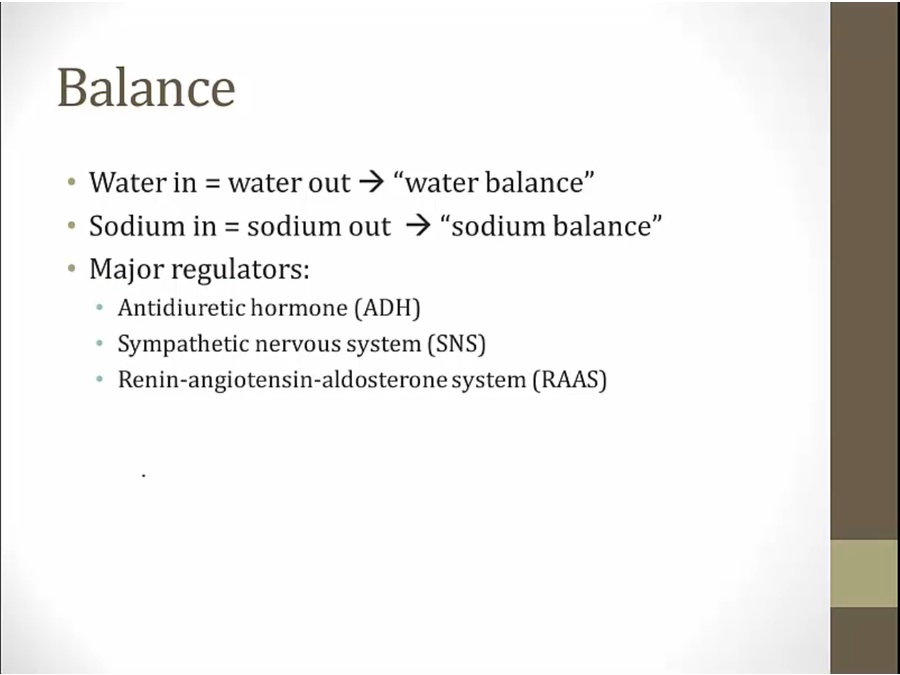
Abnormal water balance as result of abnormal ADH: hypo/hypernatremia (SIADH, diabetes insipidus)
Abnormal Na balance result of abnormal RAAS/SNS: hypo/hypervolemia (HF, hemorrhage)
Effective Circulating Volume

_..
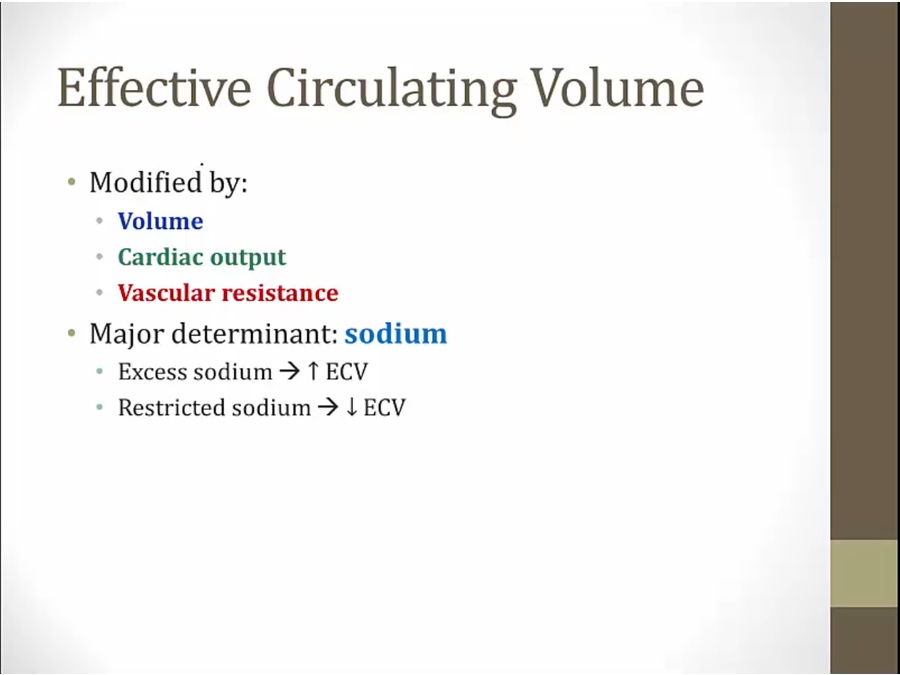
increase volume, usually increase ECV
increase CO, increase ECV
resistance: low resistance, low ECV
_..
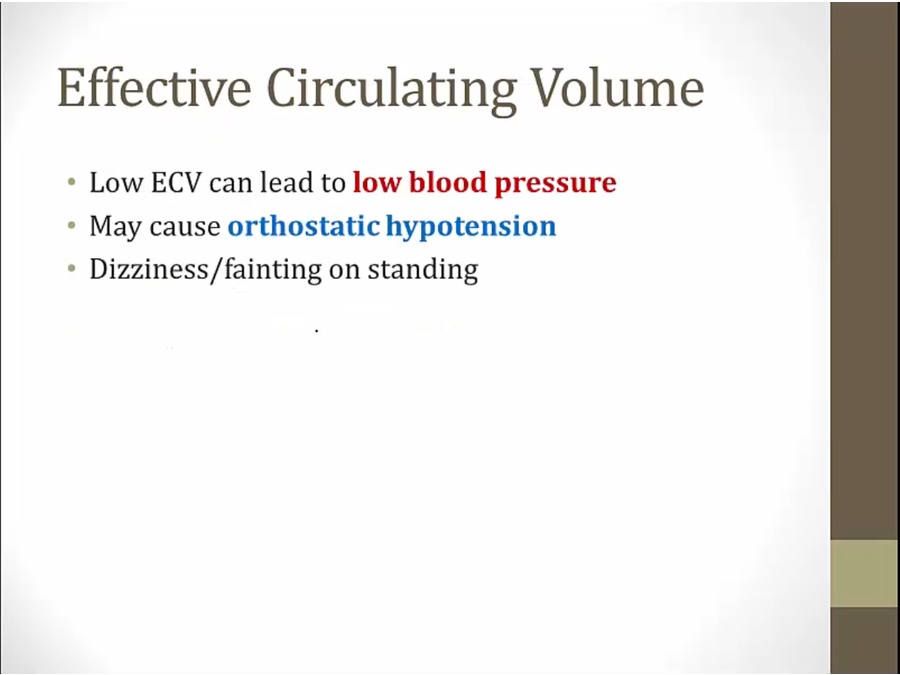
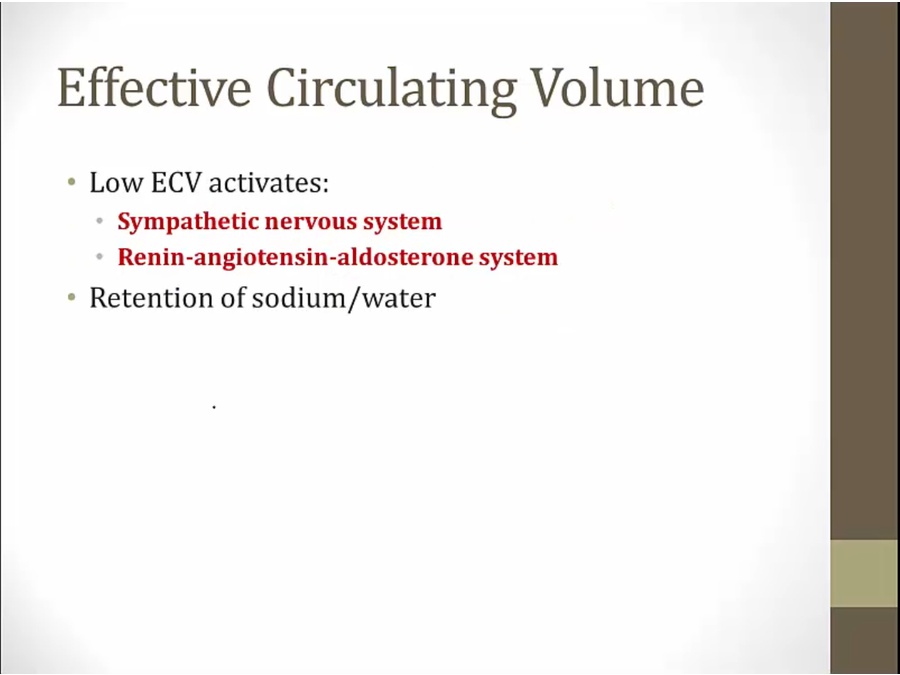
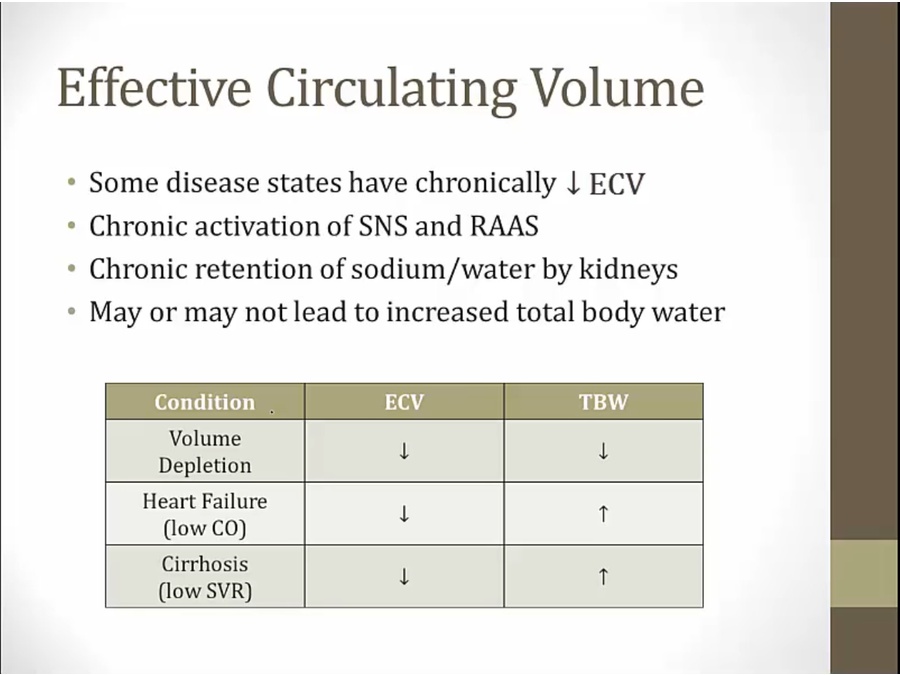
cirrhosis: low SVR due to vasodilation
ADH
_..
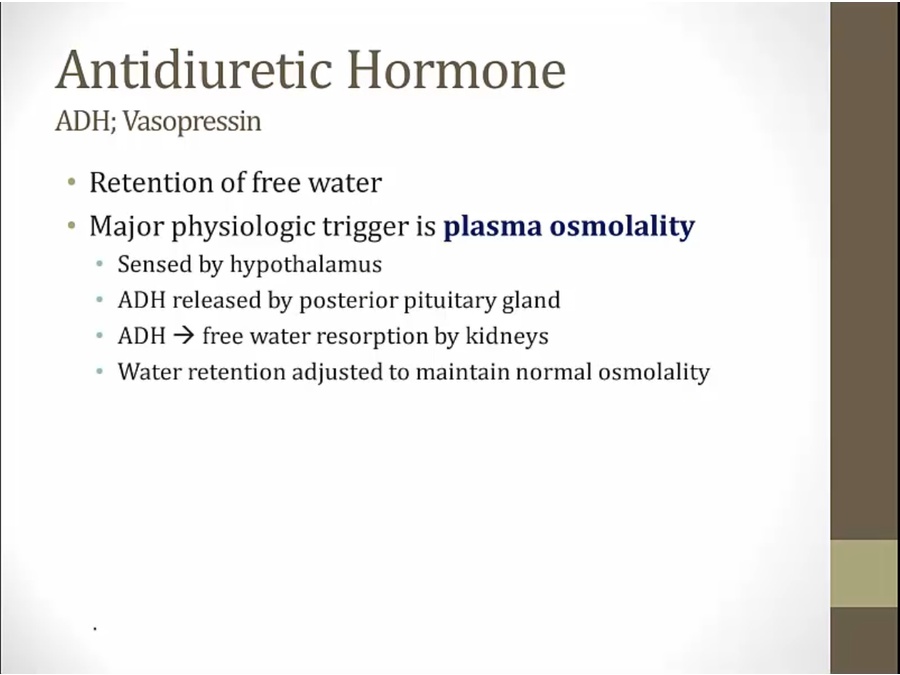
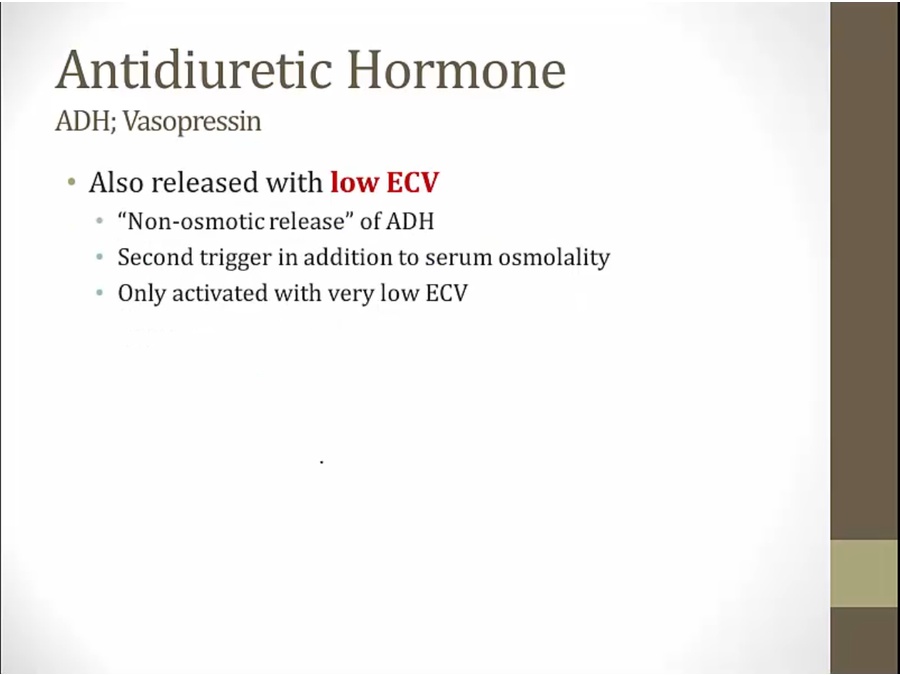
only at very low level
when activated at low ECV, can increase water reabsorption too much = hyponatremia
Water Balance
_..

any water intake must be excreted to balance normal Na
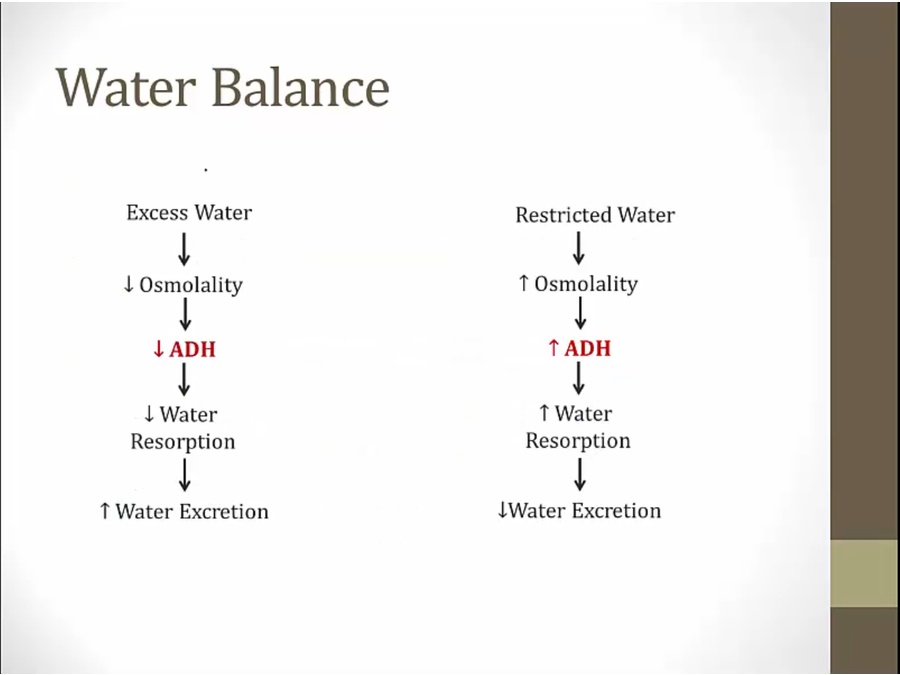
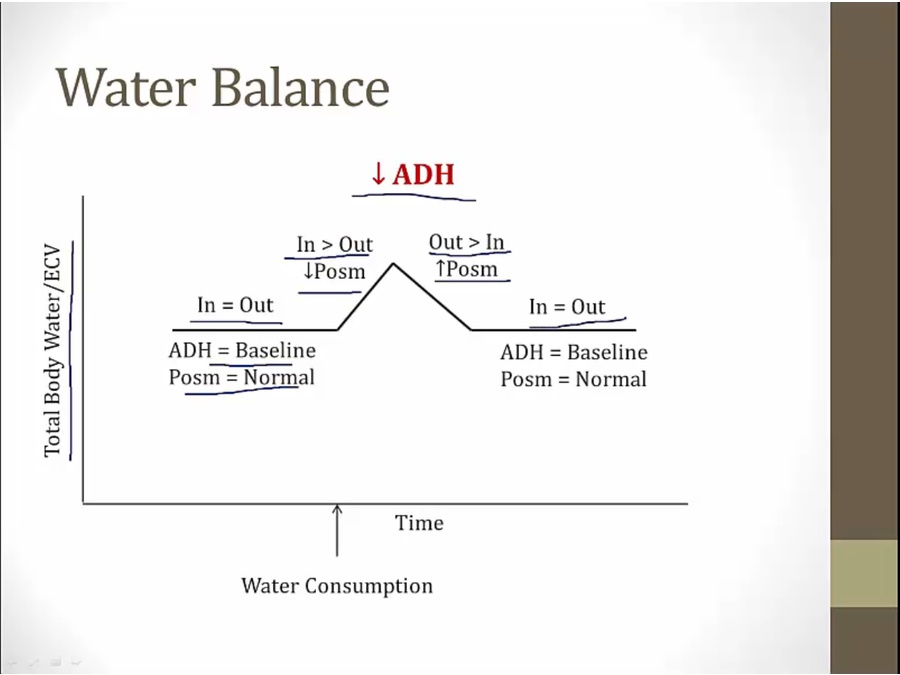
starting point same level as stopping point
Na Balance
_..

water intake by itself only transiently increase ECV. Very quickly restored by decrease ADH
Na intake increase ECV but not restored to normal level
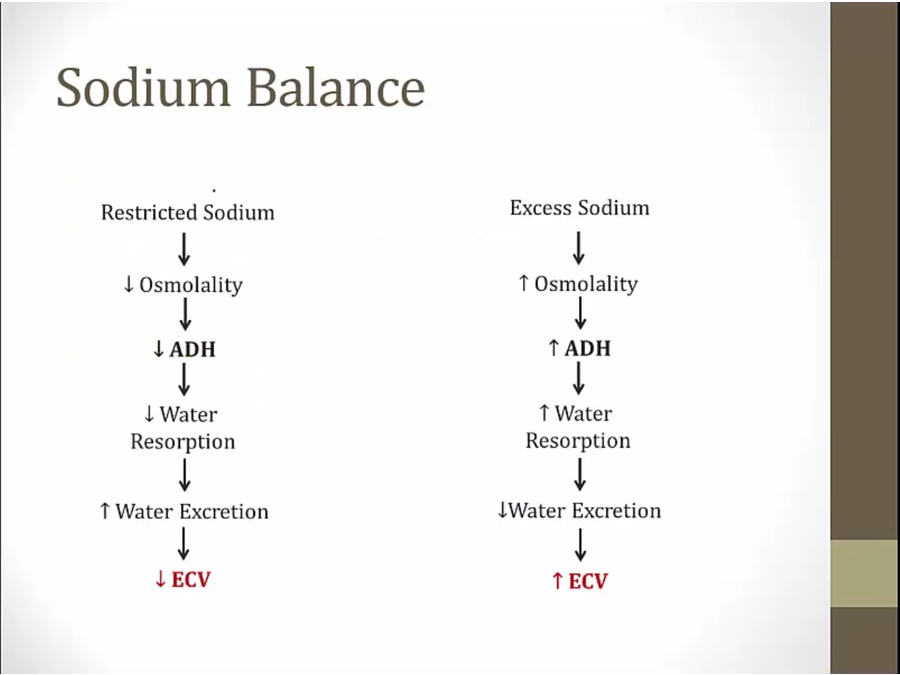
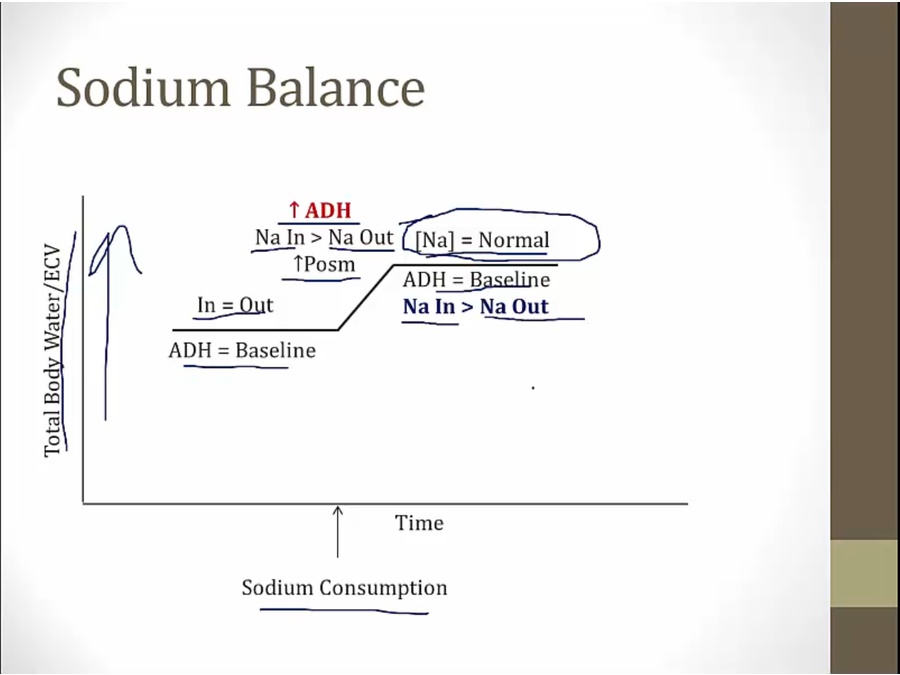
abnormal high Na ingestion > increase osm > increase ADH
osmolarity fixed, but ECV goes up
fix Na concentration but not Na balance
how to fix? RAAS, sympathetic



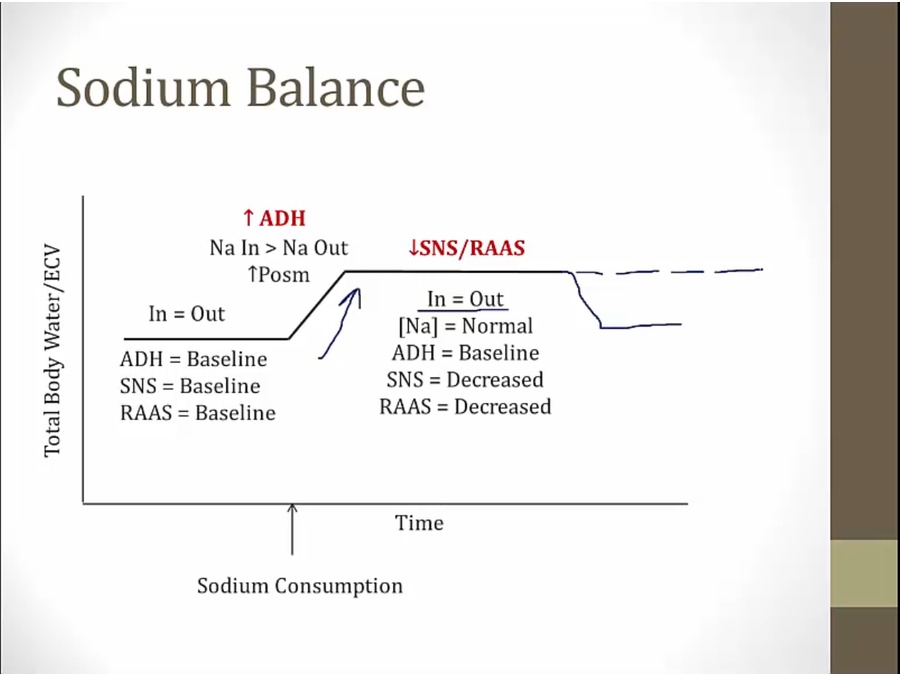
decreased SNS/RAAS balances in vs out for Na/H2O but does not drive down ECV volume to original, only maintains it to have balanced Na/water
body continue on higher ECV as long as Na consumption high
only thing return to low ECV: lower Na consumption
significance: HTN pts have high ECV volume (hypervolemia) despite Na/water balanced
_..

_..
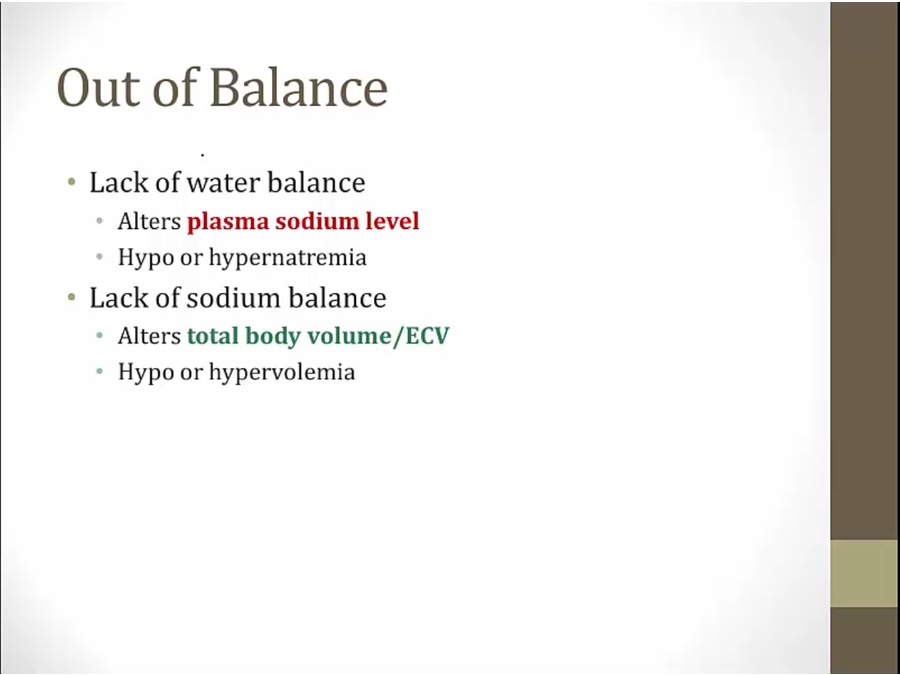
hypo/hypernatremia: problem of water balance, not Na balance
Pathology
_..
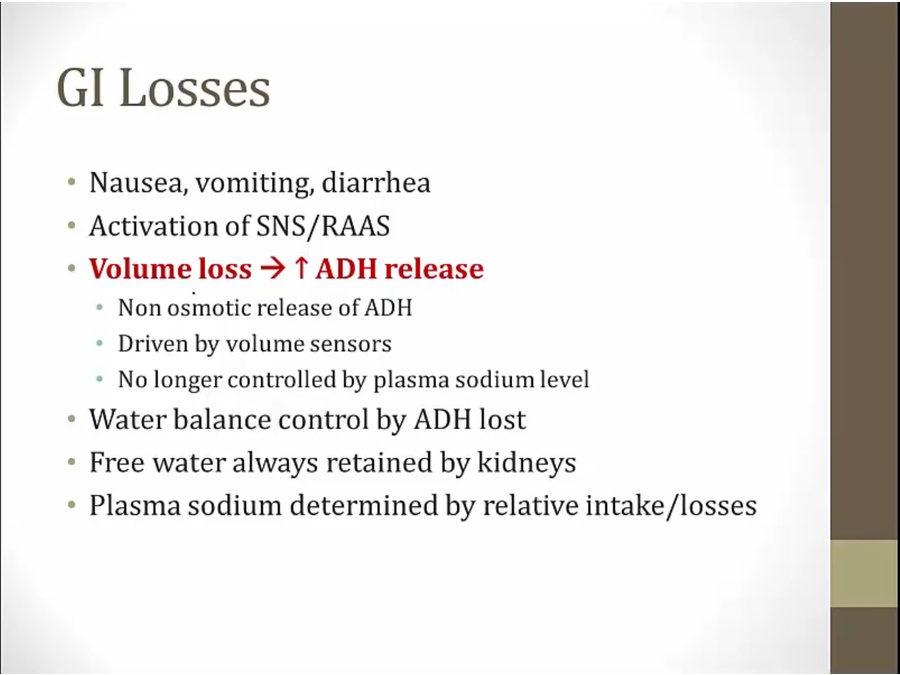
GI loss of Na and water
very easy to have hyper/hyponatremia
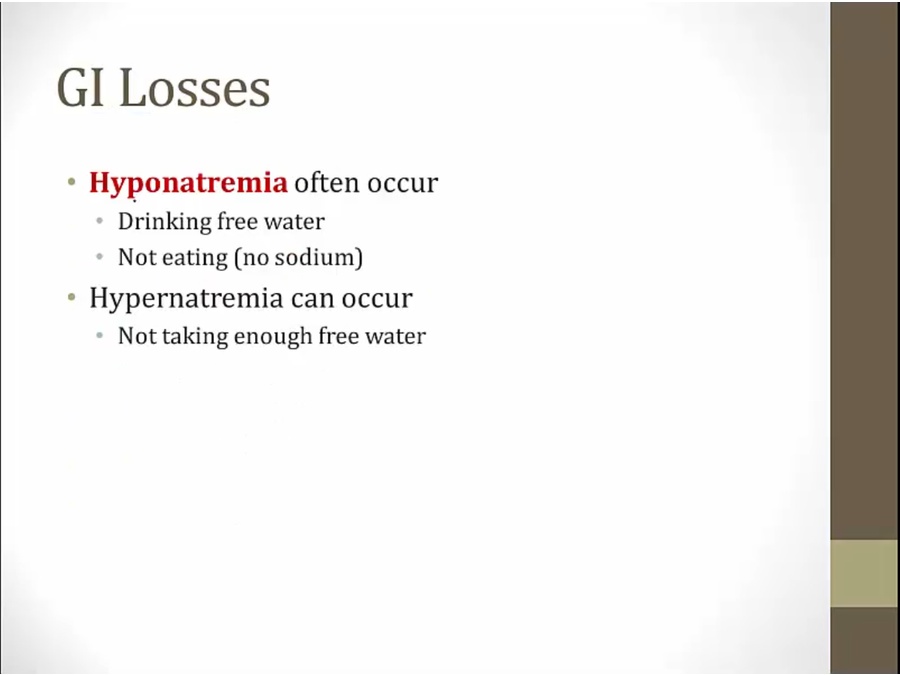
result: hypovolemic, hyponatremic
_..

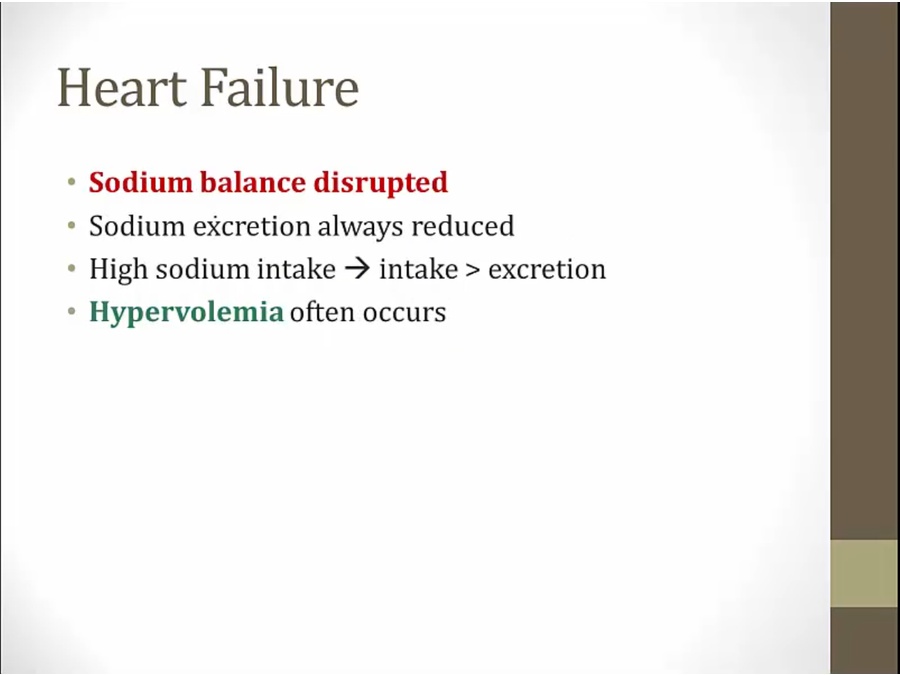
Na excretion always reduced
if eat a lot of Na, intake more than excretion
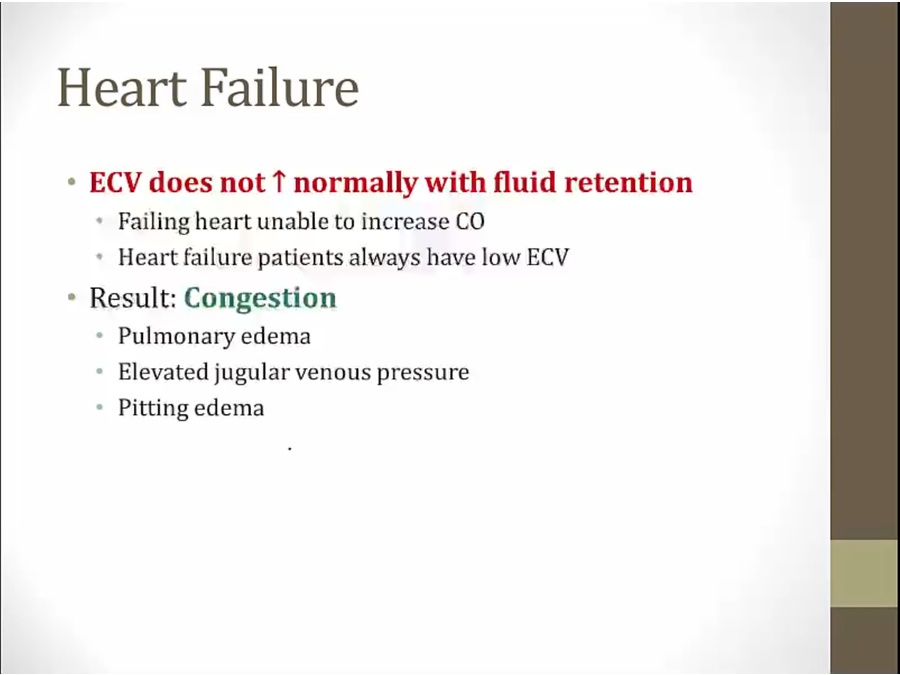

often drink more free water than needed
result: HF pts hypervolemic and hyponatremic
_..
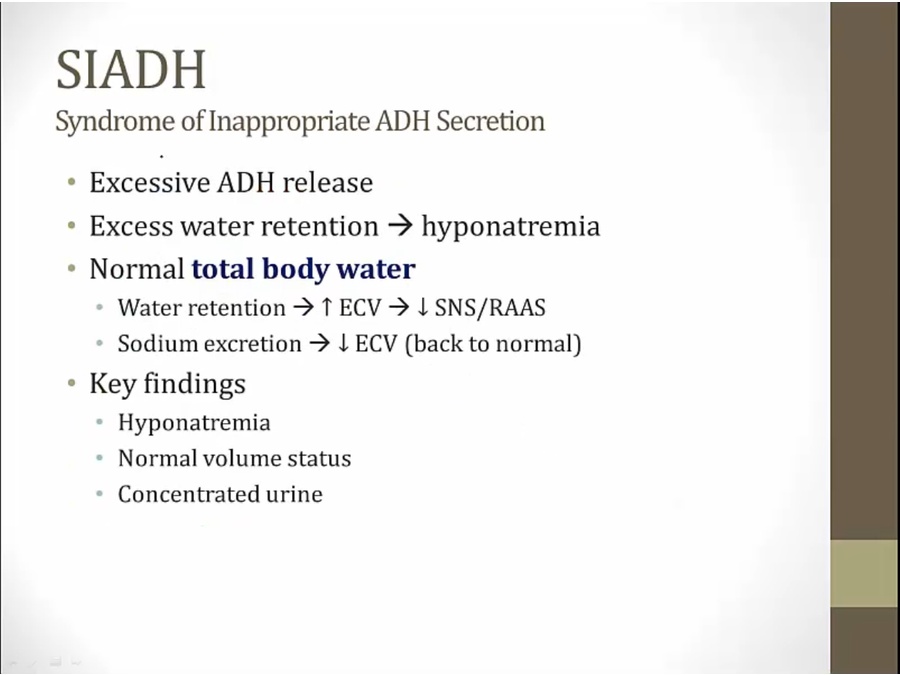
result: SIADH pts euvolemic, hyponatremic
Last updated
Was this helpful?